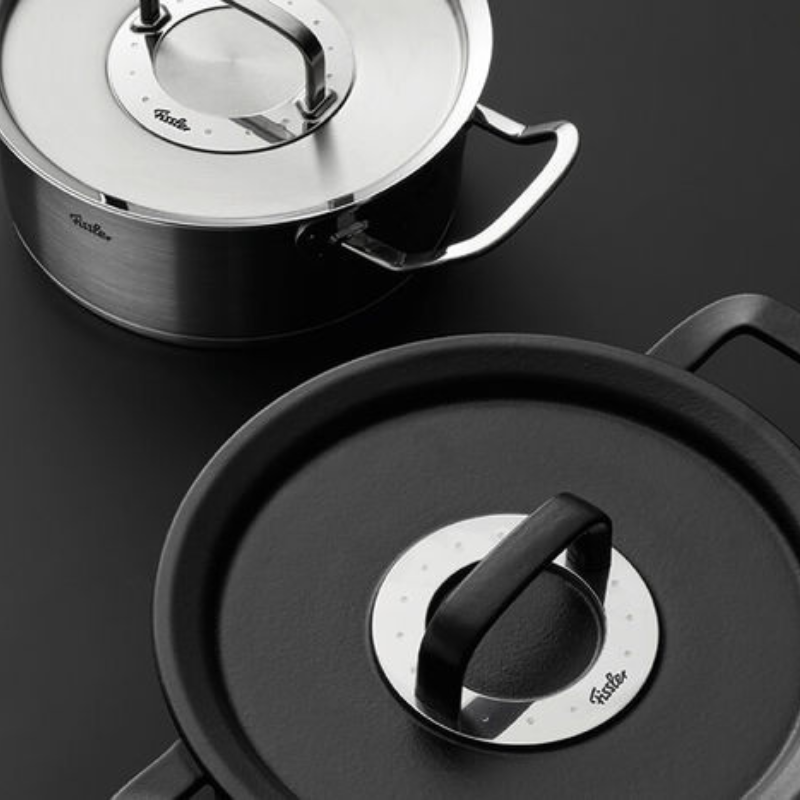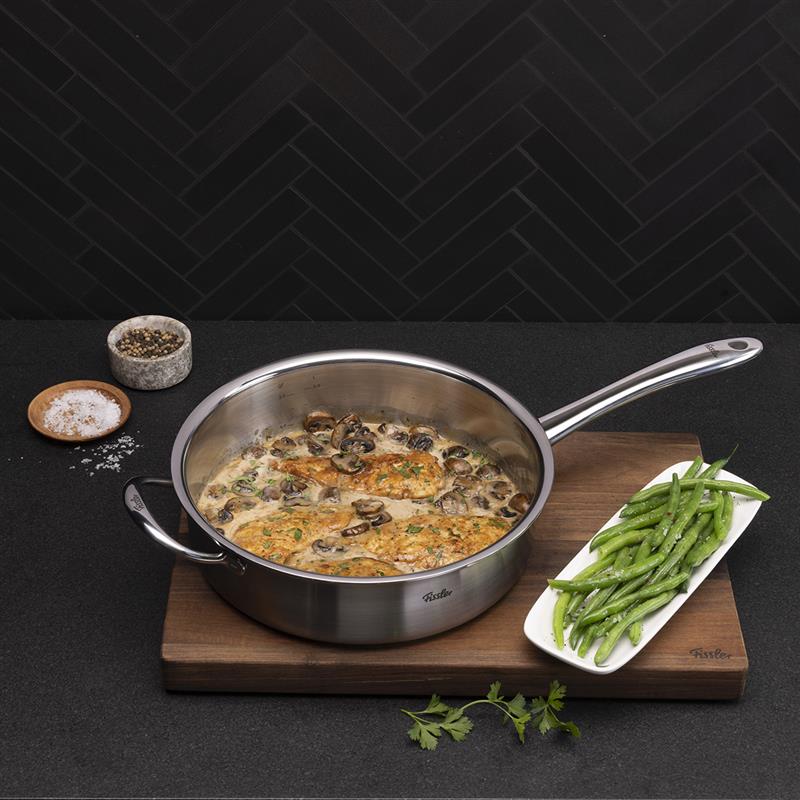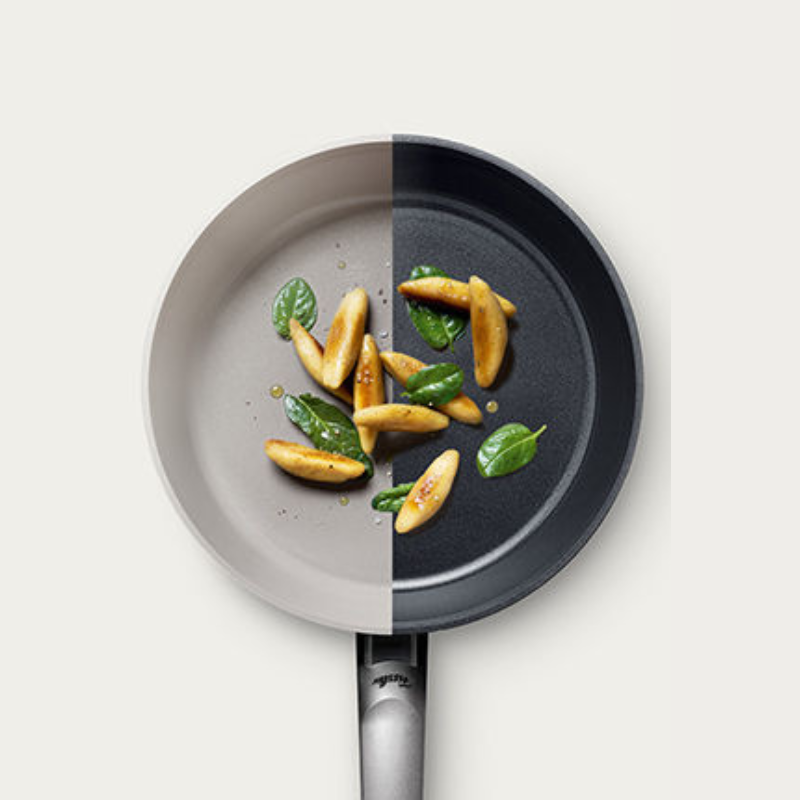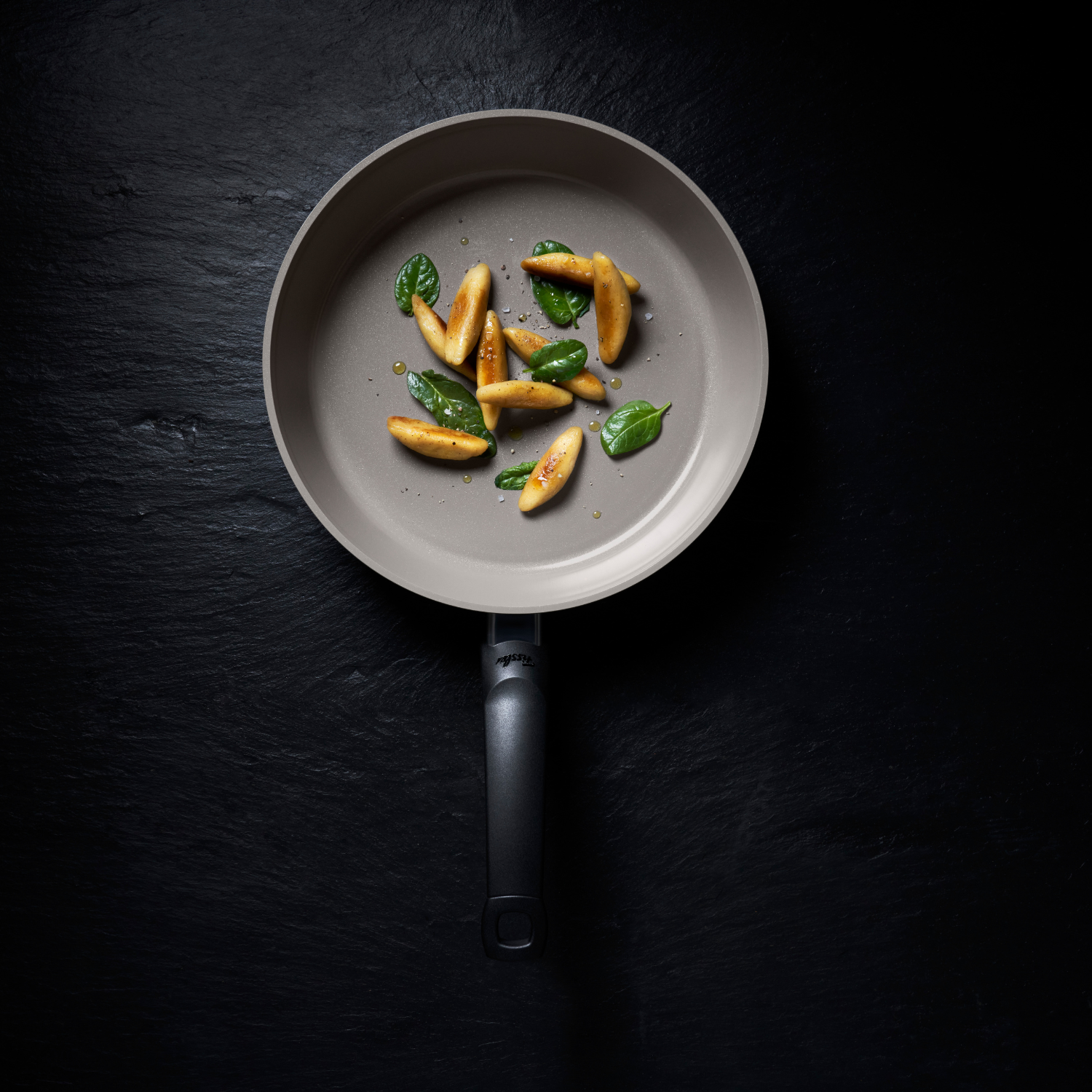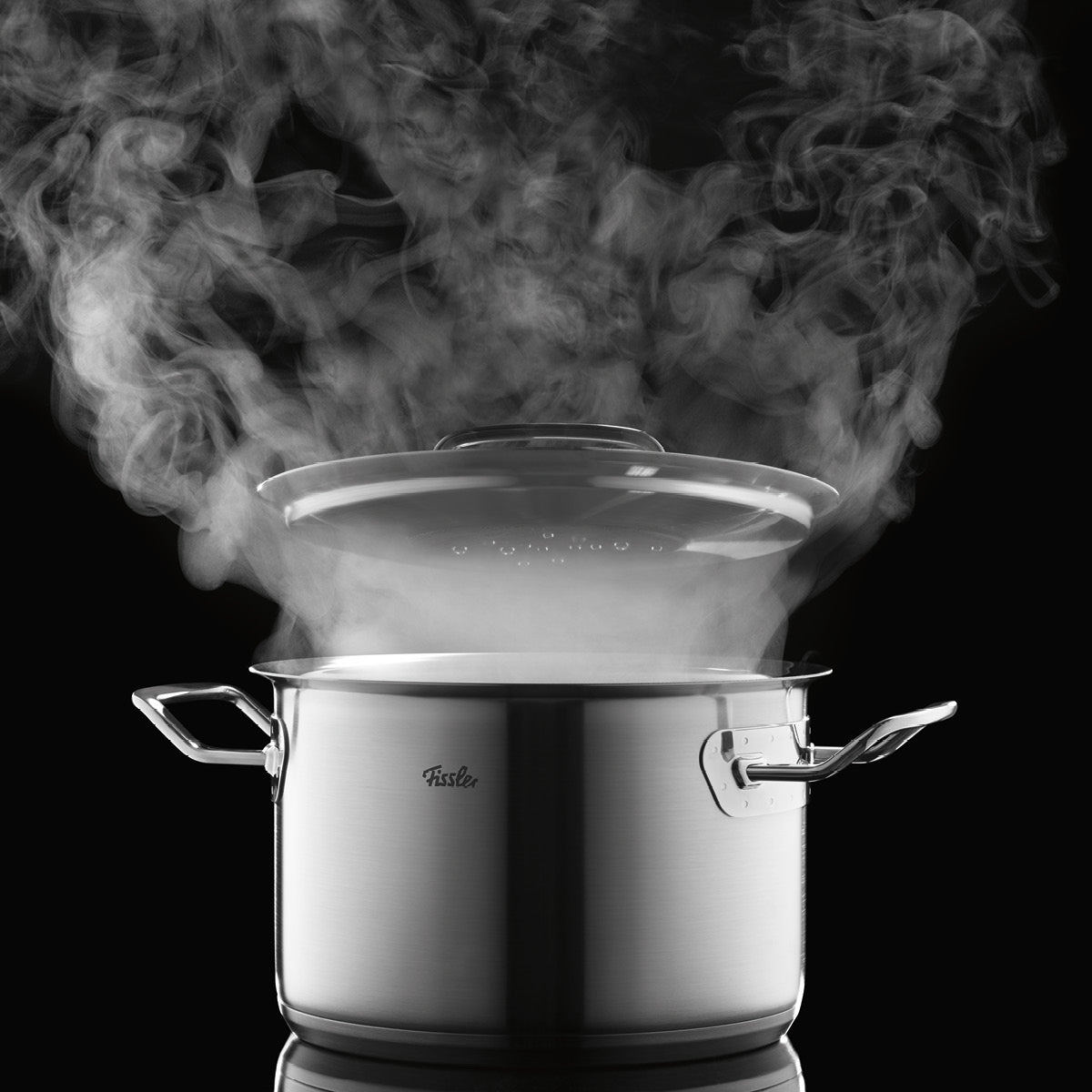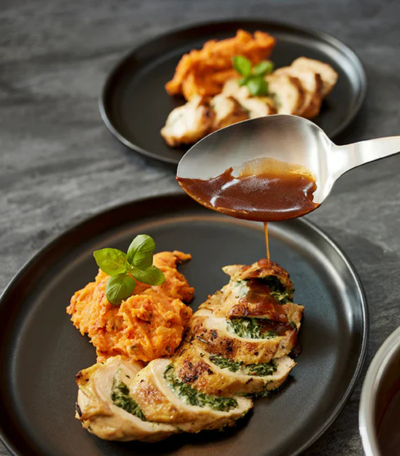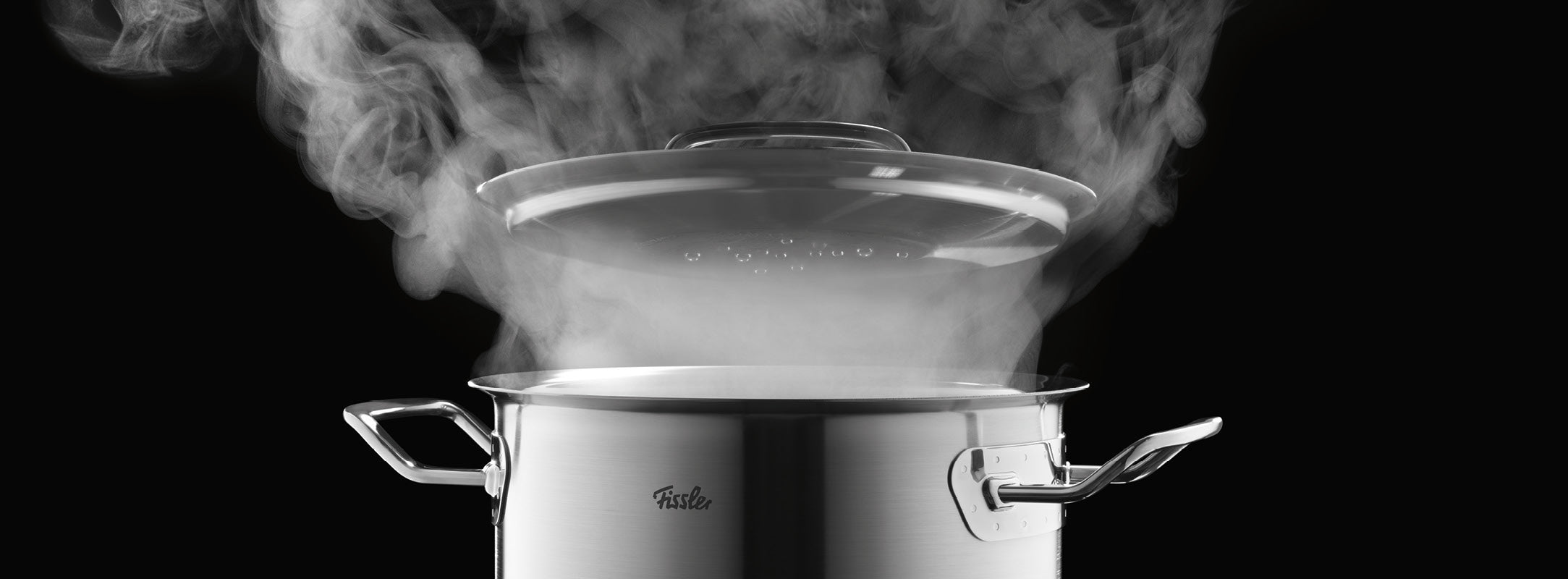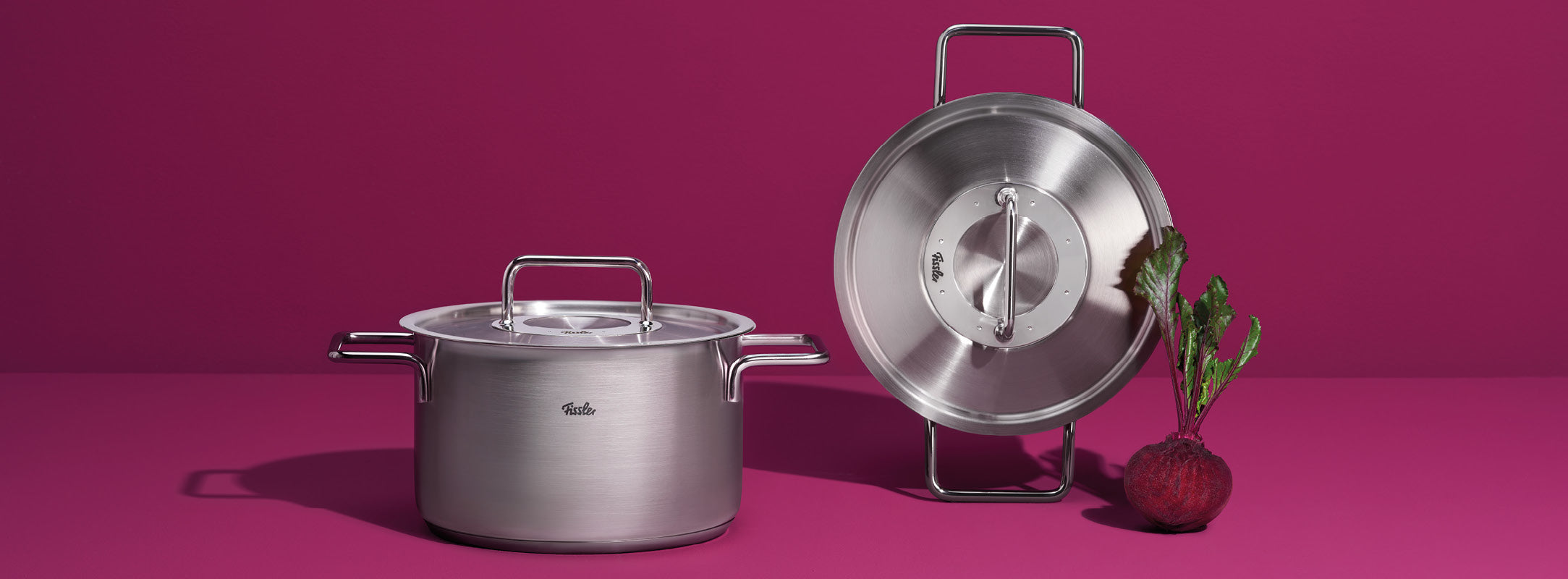Roasting pan – For stews and roasts
Roasting pans and casserole dishes are ideal for preparing delicious stews on the stove and in the oven. In addition to stewing, these types of pots can also be used for gentle steaming and even baking.
Saucepans – Perfect for sauces and small dishes
Thanks to their low sides, casseroles are ideal for sauces, small vegetable dishes, or gently braising food.
Milk pots – Specially designed for delicate liquids
With their high sides and often a special spout, milk pots are perfect for heating milk or preparing delicate creams and sauces.
Sauté pans – For delicate sautéing and reductions
The rounded edges and flat shape make sauté pans perfect for tossing vegetables, reducing sauces, or gently sautéing.
Soup pots – For stews and large quantities
Thanks to their large volume, soup pots are ideal for soups, stews, and slowly simmering broths.
Spaghetti pots – For pasta and large quantities of water
With their high sides and often integrated strainer insert, spaghetti pots make it easier to cook and drain pasta.
Vegetable pots – Perfect for vitamin-preserving cooking
These pots are ideal for gently steaming or cooking vegetables, often with a matching steamer insert.

